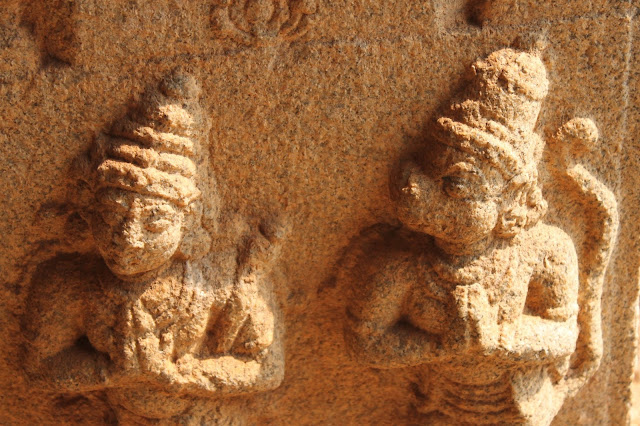The Gopura is carved in fine detail with figures of men, women and animals.
Not a bad time to rest and fix the footwear, there is much more walking to be done.
The pillars of the halls inside the Temple complex are of the characteristic Vijaynagar style.
The external walls of the Temple hall complexes are also full of sculptured figures.
Sculptures depicting the victories against the Utkala Kingdom adorn the Gopuras.
Here is a close up view of the finely sculpted figures.
So much to learn, is there not? I would have gladly studied about the art and trade practices of the Vijayanagar Empire and the Southern Kingdoms in my History text book, instead of the monotonous series of wars and killings of the Slave Kings and the Mughal Empire, which seemed to have been the focus when I went to school.
Animal sculptures destroyed by the attacking armies are found in every Temple site across Hampi. It occurred to me that the gentle elephant, with the trunk and tusks chopped off, could well be declared the National Animal of the Devastated Vijayanagar Empire.
Pretty and detailed sculptures on the pillars. Notice the little lotus between the devout figures.
The wide street opposite the Krishna Temple leads down along the Krishna Bazaar, reported to have been a centre for Gems trading. The model seems to be identical to that of the Virupaksha Bazaar.
Almost a kilometer long, the Krishna Temple bazaar was lined with shops on both sides of the broad street, which also functioned as the path for the royal Chariots.
It appears that the Krishna Bazaar is a relatively recent excavation. The bazaar area had got covered up by the soil over the centuries, and overgrown with Banana plantations, some of which can still be seen in the nearby areas even today.
You may be interested in:
-=-=














No comments:
Post a Comment
Your comments...